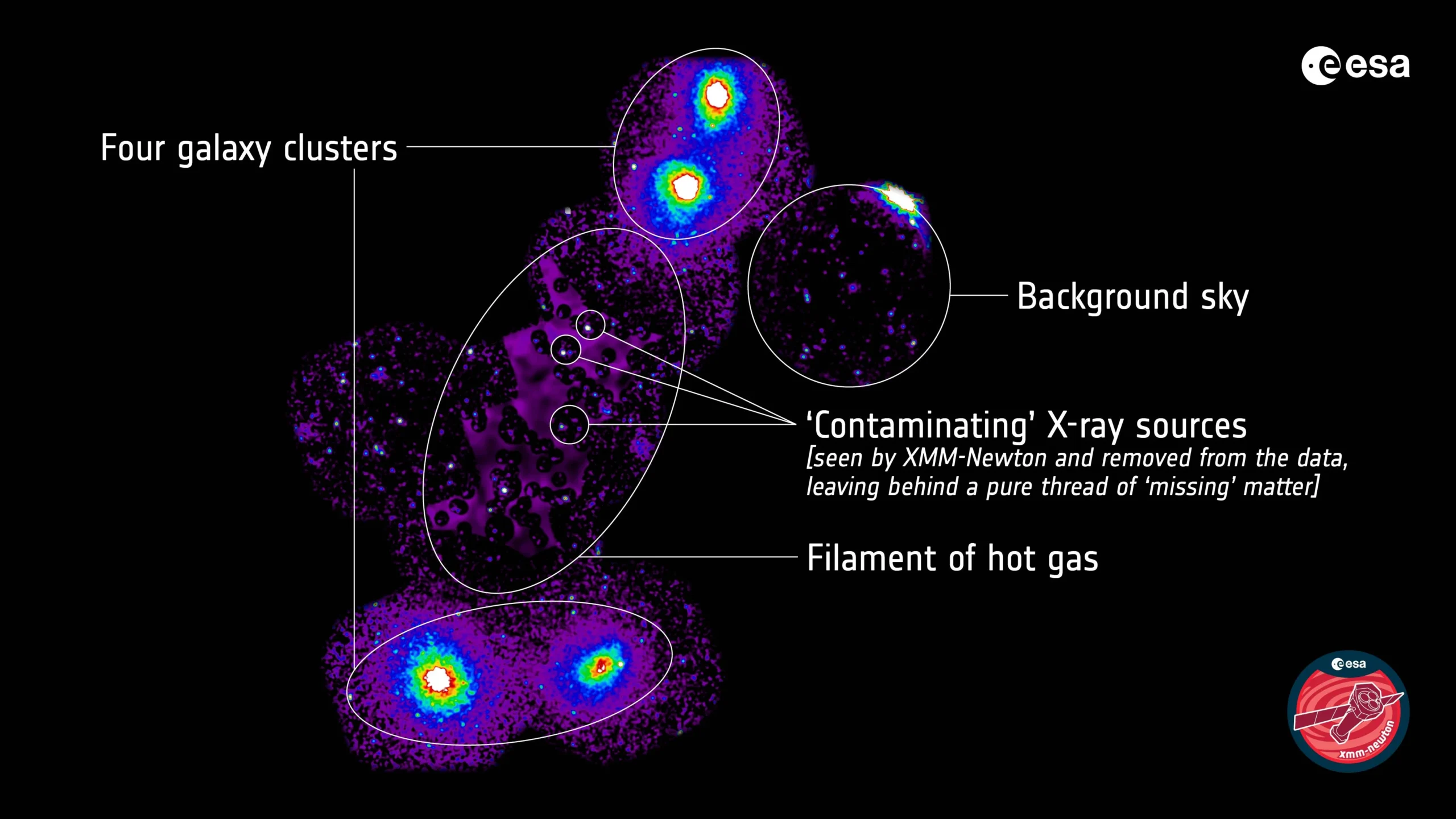
ESA’s XMM-Newton finds huge filament of missing matter
How did your country report this? Share your view in the comments.
Diverging Reports Breakdown
ESA’s XMM-Newton finds huge filament of missing matter
Astronomers have found a filament of hot gas, ten times as massive as our galaxy, that they reckon could explain where at least some of the universe’s “missing” matter might be lurking. A third of “normal” matter in the universe is “missing,” needed to make scientists’ models of the cosmos operate as postulated. The material is the ordinary stuff known as baryonic matter (baryons include protons and neutrons and other subatomic particles that make up the visible universe) But boffins have suggested that the elusive matter may be found in long strings – or filaments – of gas, bridging pockets of space. The filament contains approximately ten times the mass of the Milky Way and stretching for 23 million light-years.
‘I guess NASA doesn’t need or care about my work anymore’ READ MORE
A third of “normal” matter in the universe is “missing.” It’s needed to make scientists’ models of the cosmos operate as postulated, but has proven difficult to find. The material is the ordinary stuff known as baryonic matter (baryons include protons and neutrons and other subatomic particles that make up the visible universe – not to be confused with dark matter or dark energy.) Physicists put the mass ratio of dark matter to baryonic matter at 5 to 1, meaning only approximately 15 or 16 percent of matter in the universe is normal matter. And according to a recent Nature Astronomy paper, only a “small fraction of baryons are in stars and the interstellar medium within galaxies.”
But boffins have suggested that the elusive matter might be found in long strings – or filaments – of gas, bridging pockets of space.
“While we’ve spotted filaments before,” said the European Space Agency (ESA), “it’s tricky to make out their properties; they’re typically faint, making it difficult to isolate their light from that of any galaxies, black holes, and other objects lying nearby.”
However, with data from ESA’s XMM-Newton and the Japan Space Agency’s (JAXA) Suzaku X-ray space telescopes, astronomers have found an enormous filament of hot gas that bridges four galaxy clusters.
As well as containing approximately ten times the mass of the Milky Way and stretching for 23 million light-years (equivalent to traversing the Milky Way end to end around 230 times), the filament clocks at over ten million degrees.
Finding and accurately characterizing a single filament of hot gas stretching between clusters of galaxies is quite the achievement. “For the first time, our results closely match what we see in our leading model of the cosmos – something that’s not happened before,” said lead researcher Konstantinos Migkas of Leiden Observatory in the Netherlands. “It seems that the simulations were right all along.”
ESA noted, “It also sheds light on the very nature of the ‘cosmic web’, the vast, invisible cobweb of filaments that underpins the structure of everything we see around us.”
While JAXA’s Suzaku X-ray telescope came to the end of its scientific mission in 2015, XMM-Newton remains operational more than a quarter of a century since its launch; a testament to its designers and the engineers running the mission. According to ESA, “Suzaku mapped the filament’s faint X-ray light over a wide region of space, while XMM-Newton pinpointed very precisely contaminating sources of X rays – namely, supermassive black holes – lying within the filament.”
“This research is a great example of collaboration between telescopes, and creates a new benchmark for how to spot the light coming from the faint filaments of the cosmic web,” said Norbert Schartel, ESA XMM-Newton Project Scientist.
Schartel told The Register that XMM-Newton had spotted evidence of the material before but said, “There we saw the missing matter in absorption, now we see it in emission.”
Schartel added that observing further filaments would be challenging, but noted that there were concepts for future X-ray satellites “with the specific aim to observe such filaments.” ®
Source: https://www.theregister.com/2025/06/19/esas_xmmnewton_finds_filaments/
